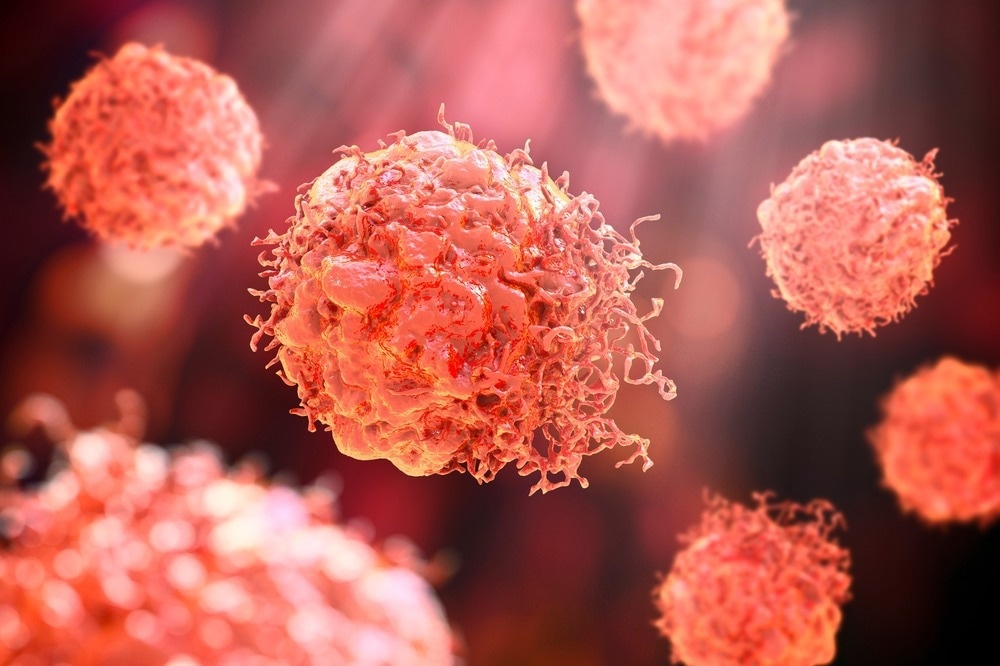Cancer is a highly complex disease involving multiple biological pathways, making searching for new and effective treatments challenging. High-content screening (HCS) is a powerful tool that allows researchers to examine the effects of potential drug candidates on cells rapidly and systematically, making it a promising new approach to discovering new cancer drugs.

Image Credit: Kateryna Kon/Shutterstock.com
High-Content screening combines automated microscopy, image analysis, and data management to examine large numbers of cells or tissues at the same time. HCS plays an important role in cancer drug discovery in identifying new therapeutic agents and understanding their mechanism of action.
Importance of High-Content Screening in Cancer Drug Discovery
HCS offers several advantages compared to traditional drug screening methods. It can allow for the testing of a much larger number of compounds, increasing the likelihood of identifying new drug candidates.
It offers a more comprehensive perspective on the impact of compounds on cellular processes, enabling researchers to discover novel mechanisms of action for cancer drugs.
Researchers can identify compounds that have complex effects on cancer cells because HCS allows for the analysis of multiple parameters simultaneously.
How High-Content Screening Works
HCS involves exposing cells to various compounds and capturing their images through a high-resolution microscope. These images are subsequently analyzed using specialized software, which can detect alterations in the behavior and morphology of cells. This includes cell shape or size changes, the number of cells, and the intensity of cellular signals.
The utilization of HCS enables researchers to examine the impact of thousands of compounds on cells concurrently, accelerating the cell discovery process. They can also use HCS to identify new targets for cancer drugs by monitoring alterations in particular cellular pathways or structures related to cancer.
High-Content Screening for Lead Compound Identification
Lead compounds are potential drug candidates identified through a series of assays and screenings; HCS can be particularly useful for this process.
HCS is utilized for the identification of lead compounds in cancer drug discovery by exposing cells to compounds and observing their effects on cancer cells. The imaging and analysis techniques employed in HCS can assist researchers in identifying lead compounds that display desirable effects on cancer cells, such as hindering cell growth or inducing cell death (apoptosis).
Compounds can be detected by HCS that demonstrate minimal toxicity on healthy cells, a pivotal factor in developing safe and effective cancer drugs.
Mechanism of Action Studies Using High-Content Screening
The use of mechanism of action (MOA) studies are imperative for understanding how a drug works and for the identification of new drug targets. This is because it aids researchers in examining the impact of drugs on cellular processes in a high-throughput manner.
In MOA studies using HCS in cancer research and development, cancer cells are treated with drugs, followed by an analysis of the impact of the drugs on the cells using high-resolution imaging and automated analysis techniques. Modifications in cellular morphology, protein expression, and signaling pathways can all be detected by these techniques, helping researchers identify the MOA of a drug.
HCS can also help in the discovery of novel drug targets by revealing modifications in cellular pathways related to cancer. By observing the impact of drugs on these pathways, scientists can detect new drug targets and potentially create more effective cancer treatments.
A notable advantage of using HCS for MOA studies for cancer research is its ability to simultaneously evaluate numerous cellular behavior parameters, offering a more comprehensive understanding of drug effects on cancer cells. This leads to a more accurate MOA determination.
Challenges and Limitations
Despite being a powerful tool, researchers must consider various challenges and limitations when using HCS.
Analyzing the large amounts of data generated by high-resolution imaging and automatic analysis techniques is a highly complex process. Specialist software and expertise are required, which can be costly and time-consuming.
The variation in cellular behavior and drug responses among different cell lines and patient samples presents an additional challenge for HCS in identifying efficient lead compounds across various cancer types and patient populations. This challenge can be overcome by standardizing the experimental conditions by controlling factors such as cell culture conditions, drug concentrations, and treatment duration.

Image Credit: Gorodenkoff/Shutterstock.com
Future Perspectives
HCS has already made significant advancements in the field of cancer drug discovery, and its future prospects are promising. One development is the potential to integrate HCS with personalized medicine, screening patient-derived cells to identify drugs that are effective for specific patient populations, allowing for the development of personalized cancer medicines.
The breakthrough in artificial intelligence could improve the speed and accuracy of data analysis in HCS, enabling the identification of new drug targets and better cancer treatments.
HCS can now be conducted on 3D cell culture models, which provide a more realistic summary of the in vivo environment. This enables the identification of drugs that are effective in complex systems.
HCS has emerged as a valuable tool for discovering new cancer drugs. Despite the challenges and limitations, new technologies and strategies are constantly being developed to overcome these obstacles. With its ability to accelerate the drug discovery process, HCS holds tremendous potential in the battle against cancer.
Sources:
- Bialkowska, A.B. and Yang, V.W. (2012). High-throughput screening strategies for targeted identification of therapeutic compounds in colorectal cancer. Future Oncology, 8(3), pp.259–272. doi:https://doi.org/10.2217/fon.12.19.
- blog.biobide.com. (n.d.). High Content Screening: What is it, Methodologies and Best Practices. [online] Available at: https://blog.biobide.com/high-content-screening-what-is-it-methodologies-and-best-practices [Accessed 19 Feb. 2023].
- Fraietta, I. and Gasparri, F. (2016). The development of high-content Screening (HCS) technology and its importance to drug discovery. Expert Opinion on Drug Discovery, 11(5), pp.501–514. doi:https://doi.org/10.1517/17460441.2016.1165203.
- Shan, F., Close, D.A., Camarco, D.P. and Johnston, P.A. (2018). High-Content Screening Comparison of Cancer Drug Accumulation and Distribution in Two-Dimensional and Three-Dimensional Culture Models of Head and Neck Cancer. ASSAY and Drug Development Technologies, 16(1), pp.27–50. doi:https://doi.org/10.1089/adt.2017.812.
Further Reading
Last Updated: May 2, 2023